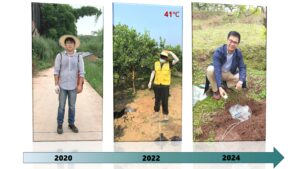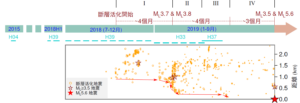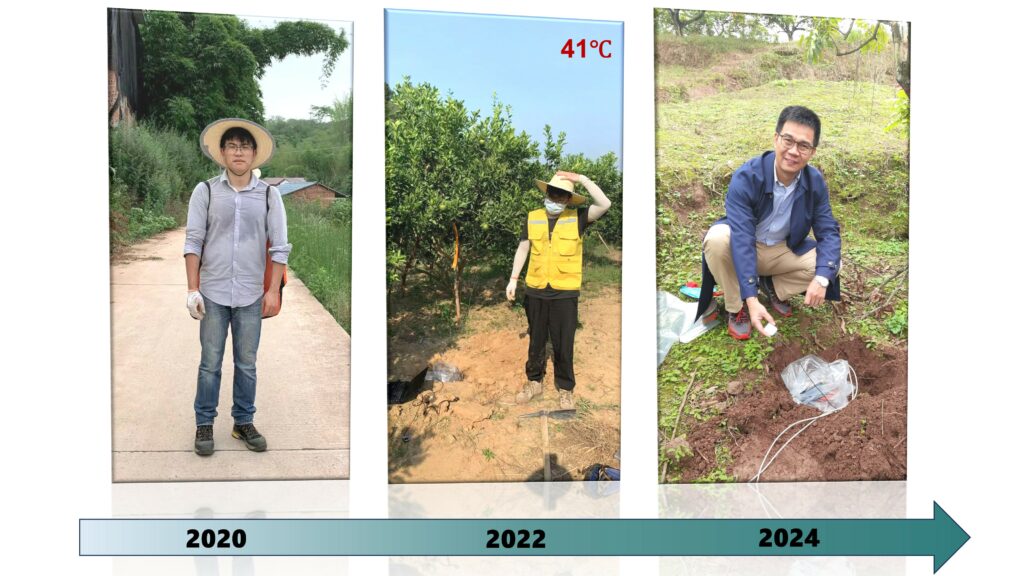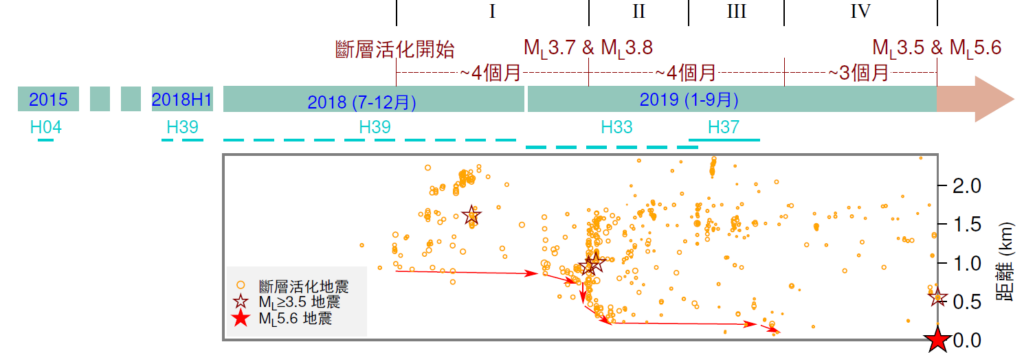CUHK
News Centre
CUHK scholar uncovers precursory signals lasting up to 11 months before a destructive induced earthquake
Professor Yang Hongfeng and his research team at the Department of Earth and Environmental Sciences at The Chinese University of Hong Kong (CUHK) have identified an 11-month-long precursory fault activation preceding the 2019 ML 5.6 earthquake in the Weiyuan Shale Gas Field, Sichuan province, China. This groundbreaking discovery, published in the prestigious journal Communications Earth & Environment, highlights the prolonged precursory signals before the earthquake, offering new insights into the mechanisms by which destructive earthquakes are triggered and potential strategies for hazard mitigation. Professor Yang’s team conducted a study in 2020 that attracted attention from the academic community worldwide, revealing that hydraulic fracturing in the region could induce destructive earthquakes. This latest research delves deeper into the triggering mechanisms, further enhancing the understanding of induced seismicity caused by hydraulic fracturing.
Since 2017, Professor Yang’s team have been studying induced earthquakes in the Sichuan Basin, the main shale gas production region in China. While most induced earthquakes are minor, some can be destructive, causing casualties and significant economic losses. The mechanisms driving these destructive events have been poorly understood, making it challenging to develop effective mitigation strategies. In 2020, his team reported that the extremely shallow earthquake in the Weiyuan Shale Gas Field was possibly associated with hydraulic fracturing, a technique used to enhance shale gas production by injecting high-pressure fluid into low-permeability shale layers to create fractures. This marked a significant milestone, as it was the first documented case of a fatal earthquake caused by hydraulic fracturing. In 2023, his team discovered a new mechanism by which hydraulic fracturing can induce earthquakes.
In the latest research, using near-fault seismometer data and advanced data-processing techniques, the team achieved remarkable precision in their analysis (location errors of less than 10 metres), allowing them to identify long-term precursory signals in the 2019 ML 5.6 earthquake in the Weiyuan Shale Gas Field, which linked to its shale gas exploitation. Numerical simulations further revealed that aseismic slip – a slow, non-earthquake-generating movement along the fault – was the primary driver of this prolonged preparation stage. The region began shale gas exploitation in 2015 and established multiple hydraulic fracturing platforms to inject high-pressure fluid into shale layers. Due to the migration of fluid into the fault zone by the H39 platform, fault movements had become active since October 2018. Subsequently, as influenced by continued hydraulic fracturing by other platforms, precursory foreshocks migrated toward the mainshock hypocentre. Professor Yang said: “Since the destructive events occur after fracking operation have ended, it is challenging to implement timely and effective mitigation measures. Our discovery of a prolonged precursory fault activation signals is important for the risk assessment of induced earthquakes. This continuous seismicity illuminated the fault plane over 11 months, acting as a warning signal for the ensuing earthquake which brought massive destruction. It reveals how subtle fault movements evolve into catastrophic events.”
The identification of these precursory signals suggests they could be harnessed for hazard warnings in regions with active shale gas operations. The team plans to continue its research in Sichuan Basin, expanding the earthquake database to support the development of a warning system. The research also involved the first author, Dr Zi Jinping, funded by the Hong Kong PhD Fellowship Scheme, and the co-first author, Dr Yang Yuyun, an RGC Postdoctoral Fellowship Scheme awardee and now Assistant Professor at Lingnan University.
For the full study, please visit: https://www.nature.com/articles/s43247-025-02151-1
Previous study in 2020: https://www.cpr.cuhk.edu.hk/en/press/cuhk-professor-investigates-extremely-shallow-earthquake-related-to-shale-gas-production-in-sichuan/

Dr Zi Jinping (left and middle) and Professor Yang Hongfeng (right) conducting fieldwork; they deployed seismometers in the field to collect earthquake signals.

The 2019 Weiyuan ML 5.6 earthquake was preceded by 11 months of precursory signals, linked to shale gas exploitation in the Weiyuan Shale Gas Field, Sichuan, which began in 2015. Fault activation commenced in October 2018 due to hydraulic fracturing at the H39 platform. Following this activation, precursory foreshocks migrated toward the mainshock hypocentre, influenced by continued hydraulic fracturing across multiple platforms, including H37.









